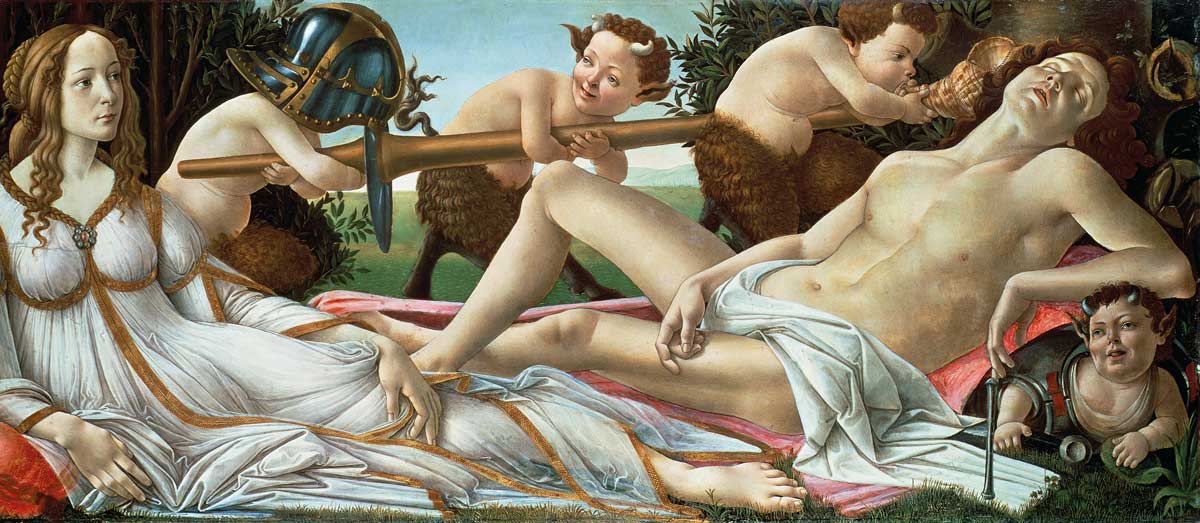Venus and Mars
Love conquers all in Botticelli’s sensuous mythological masterpiece.

Sir William Boxall, Director of the National Gallery in London, was accompanied by the Chancellor of the Exchequer, Benjamin Disraeli, to a sale at Christie’s auction house in June 1874. The collection of the dealer Alexander Barker was up for sale and Disraeli wanted to secure some of the works for the nation. It was a canny decision: in the mid-Victorian period Old Masters were hugely undervalued, though the reputation of Sandro Botticelli, the Florentine Early Renaissance painter, was beginning slowly to rise thanks to his rediscovery by the Pre-Raphaelites. His Venus and Mars cost the nation £1,050, a fraction of the prices paid at the time for works by contemporary artists.
It is likely that Venus and Mars was commissioned for a wedding. The wasps that buzz around Mars’ head suggest that it may have been painted for a member of a family he knew, the Vespucci; their name translates as ‘little wasps’. Languid and sensuous, the image marks the victory of love (Venus) over war (Mars) and was originally a spalliera, a fashionable item among the Tuscan aristocracy, which was set into panelling, such as the headboard of a marital bed.
